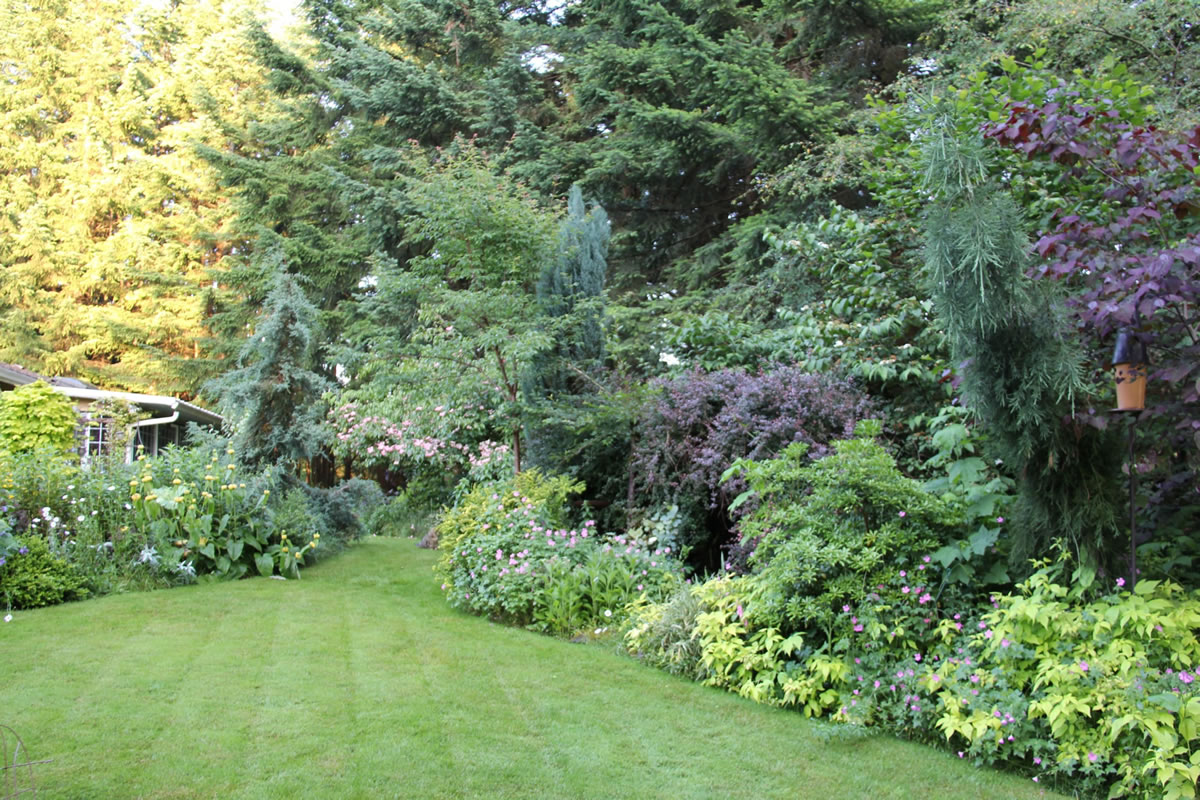I spend most of my time in the garden doing seasonal chores. In my garden journal I keep a list of annual and seasonal tasks that need to be done in the garden throughout the year. At the beginning of each month, I refer to my task list for that specific month. In addition, I am always revising a personal, ever-changing list of jobs specific to my own garden.
Most working gardeners tend to see their gardens through a series of scheduled jobs. We concentrate on a particular task such as weeding, mowing the lawn or adding mulch to beds and borders. We catalog details. When I am deadheading spent flower heads or weeding garden beds, my goal is nearsighted. I want to get the job done.
When prepping the garden for an event such as friends coming over for dinner or a garden visit from an out-of-state friend, our entire perspective changes. Since most of us have spent time visiting other gardens, we know that the first thing a visitor sees is the overall garden picture. When visiting another garden, our first impression is often an emotional reaction.
Once the initial impact of entering a garden subsides, our focus begins to narrow. A well-planned garden offers comprehensive vignettes within the larger picture. We don’t want the visitor to see everything at once but we do want the visitor to always have something to see. Pathways encourage us to move through the garden. The longer one remains in one place, the more microscopic their vision will become.
This concept of starting with the big picture and working down to details is one that every gardener can use to create interest in their own garden. For year-round interest, I review my garden with each passing season. The work we do highlights the overall look of the garden. Whether you are starting a garden from scratch or have been in the same garden for many years, the flow of your garden should be a major consideration.
ooo
In a way, each individual garden dictates the level of maintenance required to keep it looking its best. A gardener with a penchant for roses will need to learn the art of pruning as well as general rose care techniques. The rock gardener may never have to prune a rose, but must ensure that his or her garden soil is well-drained in every season of the year. From the beginning, every garden plan and every garden purchase should be made with an eye on upkeep.
ooo
There are many times in the year when a gardener needs to envision the garden in a completely different season. In autumn we imagine the arrival of spring bulbs and plant them in the garden according to that vision. In spring we speculate on summer flowers. Now is the time to imagine what your garden will look like in the following season and in the years ahead.
Around the holidays, it’s fun to take advantage of plants in the garden for seasonal ornament. If you like this idea, you might enjoy a Christmas holly (Ilex aquifolium) planted in your garden. Every tiny white flower in spring will become a red berry for winter interest. If you have space for a large shrub or tree, depending on the variety you choose, consider planting a holly this fall.
Are you perfectly happy with your summer beds and borders or would you like to make some changes now, in preparation for next year? Draw a picture of your flower border. Make a note of voids and color clashes. Write down what you would like your ideal garden to be. I use plant catalogs to help me list the plants that would transition well from one season to the next. Choose a combination of plants whose colors will blend together even as they change with the seasons.
Many gardeners, especially recent converts, have a garden full of spring flowers only. By the end of summer the picture falls to pieces. That’s typical and understandable. We all go through stages in life and gardening. Exuberance is an appropriate approach for beginning any project, especially in spring. It’s the ability to mature and to continue taking your garden one step further that marks the whole-hearted gardener.
ooo
The change of seasons from summer to autumn is the perfect time to begin thinking about fall planting and transplanting. The onset of cooler temperatures and the probability of rain bring ideal conditions for adding hardy perennials, trees, shrubs and groundcovers to your garden. Whether rain comes with the change of seasons or not, check to make sure new transplants are well-watered through winter.
Robb Rosser is a WSU-certified master gardener. Reach him at Write2Robb@aol.com.



